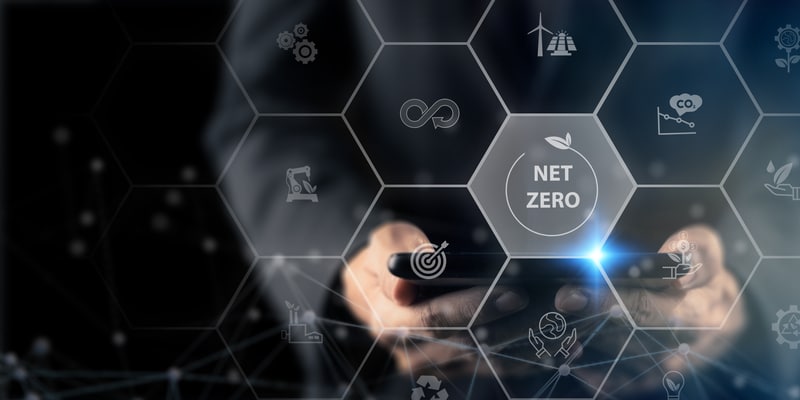
What Elon Musk's AI warning says about ethical AI in business
The report by Statista forecasts a significant 21 percent net increase in the United States' GDP by 2030, attributing this growth to the integration of Artificial Intelligence (AI). This projection underscores the immense impact AI is expected to have on economic expansion. However, amid this rapid advancement, tech innovator Elon Musk has expressed serious concerns about the need for AI regulation.
Speaking at the Paris VivaTech event, Musk highlighted the potential dangers of unregulated digital superintelligence. His warnings serve as a vital reminder for businesses to reevaluate their use and engagement with AI technologies, emphasizing the importance of a balanced approach to AI integration in the economic landscape.

How education IT departments need to learn from their students -- It's all in the apps
In the wake of the digital boom that echoed out from the pandemic era, schools have steadily been coming to grips with how to operate in a reality where devices are far more ubiquitous in classrooms than before, and classes are forced to make accommodations for a split between remote and in-person learning. Breakthroughs in classroom management and content filtering solutions have helped keep students away from outside threats, such as harmful online content. Still, one of the greatest threats to any school’s digital safety net comes from within -- the students themselves.
Even before the widespread proliferation of digital tools in classrooms, students have been rapidly becoming more tech-savvy and outpacing expectations and the capabilities of many less adept districts to stop them from getting into trouble. In a study run by Impero Software, 27 percent of students reported they had successfully circumnavigated their school’s internet filtering system.

The modern CISO's guide to navigating new SEC cyber regulations
The U.S. Securities and Exchange Commission (SEC) regulations requiring reporting of a material cybersecurity breach within four days have taken effect. As we progress through 2024, CISOs are going to face the harsh reality of needing to consistently demonstrate and attest to the fidelity of their cybersecurity program.
The outdated method of “buying every tool to protect every vulnerability” will simply fail. Without a clear vision of your threat exposure, security teams will be left feeling overwhelmed with the specific task of addressing known risks, often leading to a game of cybersecurity whack-a-mole -- addressing risk after risk with no real light at the end of the tunnel in sight.

Exposure management: Key to navigating the cybersecurity skills gap
With cyber threats on the rise, organizations across industries are scrambling to fortify their defenses and safeguard sensitive data. However, a significant obstacle stands in the way: the widening skills gap in cybersecurity.
According to ISC2's latest Cybersecurity Workforce Study, the worldwide cybersecurity workforce shortage has reached a new high, nearing 4 million, despite a 10 percent growth in the workforce over the past year. The gap between supply and demand has surged by 12.6 percent annually, driven by factors like economic uncertainties, AI, and a complex threat landscape.

Managing the transition from DevOps to Platform Engineering
DevOps has historically been the dominant force in software development, explained by Pearl Zhu as being “for harnessing integration, interaction, and innovation.” With the increasing pressure on companies to keep pace in a rapidly evolving technological space, these capabilities are essential.
But this is changing. The standardization of DevOps into Platform Engineering demonstrates the efforts many organizations are going to make developers' lives easier and more productive. While not a new field, this transition represents an evolution in how we design, build, and deliver software.

Enhancing team harmony: Three strategies for integrating network and security solutions
In the fast-evolving landscape of cybersecurity, organizations face the challenge of maintaining operational efficiency while ensuring the security of network devices and firewalls. The increasing complexity, with factors such as cloud services, IoT devices, remote work, and legacy assets, has led to a growing list of potentially vulnerable devices. To address these issues, The Center for Internet Security (CIS) emphasizes the importance of inventory and control of enterprise and software assets.
Effective communication and coordination with the security team is often hindered by existing silos between IT and network teams, specifically network ops, network infrastructure, and network security. The lack of collaboration between teams can result in costly misfires, exposing organizations to cybersecurity threats.

Bridging the gap: Aligning OT security with the pace of new-gen technologies
The convergence of IT and OT (Operational Technology) networks has been instrumental in driving operational efficiency and innovation across industries. As businesses are rapidly heading towards Industry 4.0, the benefits of this integration are clear.
However, with digital transformation comes the risks of a constantly expanding threat landscape. The merging of IT and OT environments has amplified the risk of wide-scale disruptions and sophisticated attacks like ransomware, extending from digital to physical infrastructures. These concerns are also evident in the growing demand for OT security, as the market is projected to reach $38.2 billion by 2028.

Can you really go net zero without sustainable IT?
Achieving net zero is now a top priority for a growing number of UK businesses, but the road to carbon neutrality is littered with obstacles, difficult decisions and the odd wrong turn. It’s not easy knowing what to do, and I have a lot of sympathy for business leaders who are trying to do the right thing while juggling countless competing demands for their time, intellect, and investment.
Depending on the sector, achieving net zero might be relatively easy, or seemingly impossible. Some businesses will require only small operational or behavioral changes, while others will need to go through significant upheaval, investment, and strategic realignment before they even get close.

Why culture could be the missing link in private equity's data challenges
Available data for alternative assets is expanding at top speed, handing managers a goldmine of information and arming them to make savvy investment moves and fine-tune operational efficiencies. Ensuring transparency, quality, and data accessibility has never been more important for general partners (GPs).
Yet the tidal wave of data that organizations are handling poses a significant challenge for private equity firms. Many find themselves struggling to consolidate large volumes of data from disparate, siloed sources.

3 IT industry trends defining the next era of cloud computing
I recently had the pleasure of attending a couple of industry conferences about IT infrastructure and the cloud. Every conversation buzzed with the latest trends and questions, and every panel discussion grappled with the most pressing industry challenges that everyone in the room was interested in learning more about.
These gatherings are excellent networking opportunities, and they're also real-time snapshots of what matters most in a particular field. As such, I wanted to share a few insights that I gathered from these recent events based on topics that seemed to come up again and again.

Ransomware resurgence: Tackling the new generation of cyber threats
Sadly, there has never been a better phrase than ‘survival of the fittest’ to describe cyber criminal groups. They are constantly refining their tactics to cause greater disruption and earn even bigger profits. The ransomware ecosystem is a resilient and lucrative business model, and attacks are causing huge pain for organizations.
Just look at the recent attack on the British Library. The attack rendered the British Library’s website inoperative, and it’s been reported the institution may have to spend £7 million to recover. The Rhysida group, who were responsible for the attack, disseminated hundreds of thousands of confidential documents on the internet, encompassing both customer and employee information.

Navigating the 2024 IT landscape: The essential role of governance
This year, IT teams across the globe are facing a tech landscape that’s undergoing a major transition. Cybersecurity has emerged as a paramount concern, with escalating threats and sophisticated cyber-attacks posing significant risks to business operations.
At the same time, the widespread move towards cloud adoption introduces complexities in managing data across different platforms, making it essential for companies to follow strict data management and oversight practices.

The Deep Tech revolution -- Part 5: Hackathons
More often than not, hackers tend to get a bad reputation or, at the very least, a controversial one. In pop culture especially, they are usually portrayed either as cyber-criminals attacking organizations for personal gain or, at the very opposite end of the spectrum, using their skills for something positive. In either case, we are usually presented with the image of someone furiously typing instructions and commands on a keyboard, zoning out in front of a screen while a group of people who may or may not understand what is going on stand behind holding their breath.
Regardless of the representation, there is something that these stereotypical depictions do get right: hackers are highly skilled individuals who use technology, along with the support and knowledge of a like-minded community, to solve technical problems and challenges.

90-day certificates to drive spike in outages unless businesses act now
Last year, the Chromium Project -- a Google-backed open source browser project -- released its roadmap for building a safer, faster, and more stable Internet, containing recommendations to reduce the lifespan of Transport Layer Security (TLS) certificates from 398 days to 90. This was a starting gun to the industry. As the operator of Chrome, Google has the power to enforce shorter validity periods by making them a requirement -- which will likely become the de facto standard across all browsers soon after.
When these changes come into force, every business that uses TLS certificates -- i.e. every business that connects services with the internet -- will be impacted. TLS certificates are machine identities, they enable systems to talk to each other securely over the internet. If they are not reissued or replaced before they expire, the service they are connecting stops working. This results in hugely costly outages, disruption, and increased security risks -- and it’s something that everyone has experienced with their browser through a 'can’t connect to untrusted site- error.

Cybersecurity success -- elevate your defense against cyber threats
As cybercrime continues to increase, organizations must consider actions to improve their cyber security and cyber resilience. There are constantly new ransomware and data breach headlines hitting the news, and, according to research, a company falls victim to a cyberattack every 39 seconds.
To bolster cybersecurity, organizations must maintain constant awareness, and they should regularly update systems, encrypt and backup data. Cyber security is an ongoing action, it requires constant vigilance as cybercriminals are always looking for new ways to exploit systems and steal data. In addition, 85 percent of all organizations consider their data as one of their most valuable assets, and hackers also share this view. Ransomware is not a problem that is going to go away on its own, especially as it continues to be very profitable for criminal cyber gangs. Having said that, there are many things that you and your organization can do to mitigate against becoming another victim of cyber crime.

